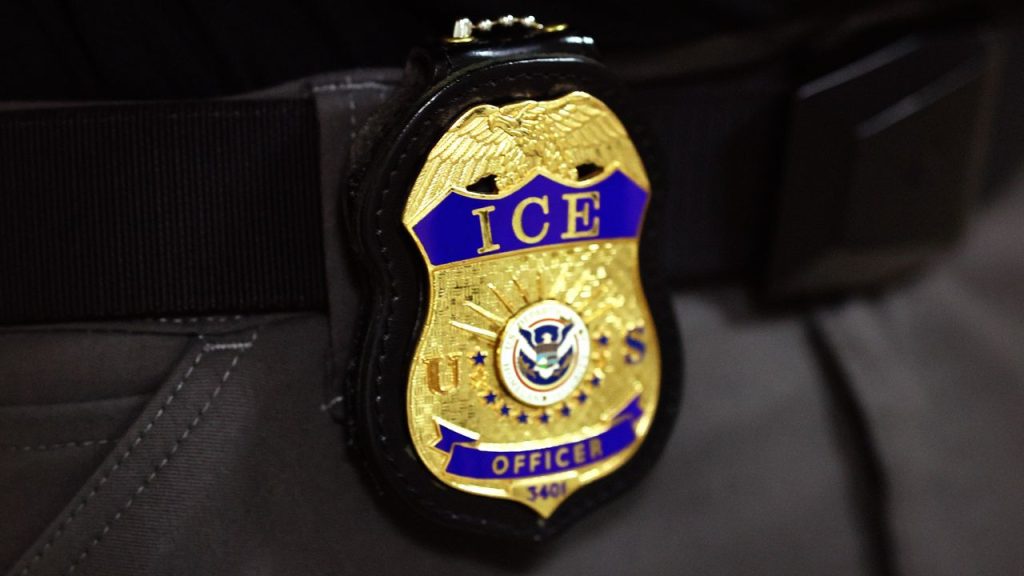For the nearly 100 days between Memorial Day and Labor Day, businesses on the South Fork of Long Island run full tilt—caterers, builders, landscapers, restaurants. The workforce behind all of that is largely immigrants. So this year, amid President Donald Trump’s ICE crackdown, locals are fearing for their families, their livelihoods, and for the local economy.
“We are on a countdown to Labor Day—it’s actually a day-to-day countdown,” says one owner of multiple restaurants in the Hamptons. “If we can make it to Labor Day with the staff we have we’ll survive,” this source says. “They literally hold the keys.”
“I kept all my staff,” the owner says. “But many of them were nervous about being deported.”
In June, fear over the nationwide deportation crackdown reached a fever pitch out East. Would such stern measures come to the Hamptons? Erika Padilla, the legal advocate for the advocacy group OLA (Organización Latino Americana) of Eastern Long Island, says if they did, the economy, already struggling to find workers, would collapse. She estimates that 75% to 80% of workers here are Hispanic and that more than half of them are undocumented or in the process of becoming documented.
According to some employers, there’s a sort of “don’t ask, don’t tell” mentality regarding immigration status. “They have to be on my payroll,” the restaurant owner says. “They have to provide us with a social security [number].”
Early in the summer, in response to the fear, some businesses considered closing for a day in case of a raid. Restaurant owners worried that nobody would show up for work, forcing closures in the high season. Some people stopped driving after dark, fearing that a burned-out taillight would get them pulled over. Nextdoor, the hyperlocal networking service, and social media were rife with reports of raids—at a grocery store, Sag Harbor’s local movie theater, a men’s shelter in Riverhead. But Damark’s, a local market, posted that rumors of the ICE raid there were untrue. East Hampton town Police chief Michael Sarlo told The East Hampton Star the rumors of ICE activity in Sag Harbor were “unfounded,” while East Hampton Village mayor Jerry Larsen said, “we’ve had no rumors of ICE activity in the village itself.” The Riverhead Police Department also released a statement about the rumored raids. They never happened.
But as the end of the summer nears, it seems ICE doesn’t need to kick down the front door of the South Fork of Long Island to deport undocumented workers. Padilla says they’ve been quietly and “methodically” entering through the back.
Much of the immigrant workforce in the Hamptons lives hours away in less expensive areas of Long Island and sometimes in less-than-ideal conditions like encampments in the woods. But, unique perhaps to the Hamptons is that many also actually live locally—in the same neighborhoods in some cases—as the people they work for. They own popular restaurants and other businesses. They are part of the fabric of the community—shopping at Red Horse and having pizza at Sam’s. In some local school districts, more than half the student body is Hispanic or Latino. Everyone enjoys the same spectacular ocean beaches and bay sunsets.
Lady Peralta felt like a part of that community. In 2019, she illegally immigrated to the United States, eventually making her way to Long Island from Ecuador. A manicurist back home, she worked cleaning houses until one of her clients connected her with the owner of Salon Xavier, a Sag Harbor spa. She was hired to work a few days a week, continuing to clean houses when she wasn’t doing nails. She was so good at her job, and skilled labor was so tight in the Hamptons, that within weeks, the salon owner hired full time.
From then on, Peralta worked as a nail tech to the power players of the area: “Singers, actresses, business people, Hollywood models, and fashion designers,” she tells Vanity Fair of her clientele through translators. “I’d never met people who were so famous.”
Peralta briefly returned to Ecuador to retrieve her young daughter, and after paying $31,000 for an assisted passage for the two of them, spent about one month taking buses and walking across the Mexican-US border illegally. She applied for asylum in January 2023 while she was on US soil.
She says she used what she made at the salon to pay back the people who had loaned her the money to come to the United States. Like many Ecuadorians who arrived in the Hamptons, she says, “We dreamed of working and getting ahead.”
She was denied asylum in May 2023, and after an appeal, denied again that September. But by that time, through the help of a lawyer, she had also helped her daughter, now 13, apply for Special Immigrant Juvenile status.
Sandra Melendez of SM Law Group is a local immigration lawyer who handles many cases using this classification. Established by Congress in 1990, the SIJ classification provides protection to immigrant children who have faced abuse, abandonment, or neglect from one or both parents and gives them a path to permanent US residency. A juvenile court judge must determine that it’s in the child’s best interest to stay in the United States. US Citizenship and Immigration Services generally issues a decision within six months, and then, if approved, they get in line for residency.
By February 2024, Peralta’s daughter’s SIJ status was approved and Peralta was appointed her legal caregiver.
“I had been doing everything right,” she says. With a now legally documented daughter, and documentation that she was appointed her caregiver, Peralta thought she was safe from deportation.
“Before Trump, that was a reasonable assumption,” Melendez says. “You have children, status, or ties.…people could happily report.” Caregivers do not need to be documented to be appointed, but they can’t gain legal status based on the SIJ classification either. Now, Melendez says, undocumented guardians of children with the status don’t know what will happen when they present themselves to authorities.
“This administration, if they don’t care about US citizens who have cancer and are still deporting their parents, what do you think they’re gonna do about the SIJ [caregivers] who are illegal here as well, and their kids don’t even have a residency? There’s no empathy.”
Melendez says this is the administration’s backdoor way of deporting people.
During the Biden administration, she says, the appointed caregivers were frequently allowed to remain even without legal status. Immigration judges would often dismiss or close removal proceedings, Melendez notes, if the removal would result in a minor being left alone in the United States. ICE attorneys were also instructed to focus their enforcement efforts on matters of national security, public security, and border security under Biden’s prosecutorial discretion policies.
Peralta says she checked in monthly by phone as directed. She had no legal standing in this country, but had remained without issue as ICE prioritized resolving high-priority cases. That’s why, in February, after receiving an email and a phone call notifying her to report in-person at 8 a.m. on March 3 for an ICE appointment in Syosset, she was initially unconcerned.

